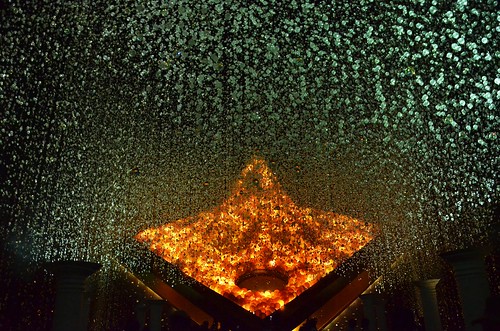extra terrestrial
FULL MEMBER

- Joined
- Nov 2, 2011
- Messages
- 1,722
- Reaction score
- 1
- Country
- Location
Real gdp = number of products in market * current value of goods adjusted to the inflation based on a base year.. I'll explain simply.. That is if a products's price is 100 now.. Suppose in 2005 it was 90.. But when we consider the inflation if the value of 90 in 2005 now is 105 the current price actually decreased that is it's current value is less than 90 when compared to 2005.. I think now you understand why i said real gdp in current value.. That is real gdp is number of products multiplied by current value of that products adjusted to inflation with respect to a base year..
You are saying gdp increased to 150 from 130 when changed the base year.. Then why world bank giving only 115 instead of 130? Also world bank will update its figures when a country done a change.. That is as bangladesh changed base year for real gdp the world bank will update its figures .. Also world bank follow an international standard for calculating its nominal gdp.. That is some particular products, sectors etc. although they are getting datas from respective statitical institutions.. Many countries follow world bank standards for international compatibility.. But some countries not.. So the national gdp figures of france, usa etc.. differ from world bank's.. This 150 may be your departments gimmik like indian planning commisions poverty figures.. According to indian planning commision there will be no extreme poor after 2015 but international agency's figures are diff.. Anyway when we compare two countries we use world banks figures.. That is nominal gdp of bangladesh in 2012 is 115 bil dollars.. Also nominal gdp is number of products multiplied with current price in that year itself ,no relation with base year..
Ok you won't understand this for sure, so I won't explain them anymore.
For your knowledge, World Bank relies on the respective national statistics bureaus of the countries and they usually collect the data at the end of the year while for the rest year they only show their estimation. So you'll get the same figure in world bank's website when 2013 ends.
Moreover, the link which I posted explicitly says the GDP of Bangladesh is 153.58 billion on current prices. Here is the link:
GDP swells, per capita income crosses $1,000 | Statistical agency starts calculations using 2005-06 as new base year
Nominal GDP is also referred to as "GDP on current prices" while Real GDP is often termed as "GDP on constant prices". Even World Bank and IMF also uses the terms "GDP on current prices" and "GDP on constant prices" rather than nominal GDP and real GDP.














 :
:



